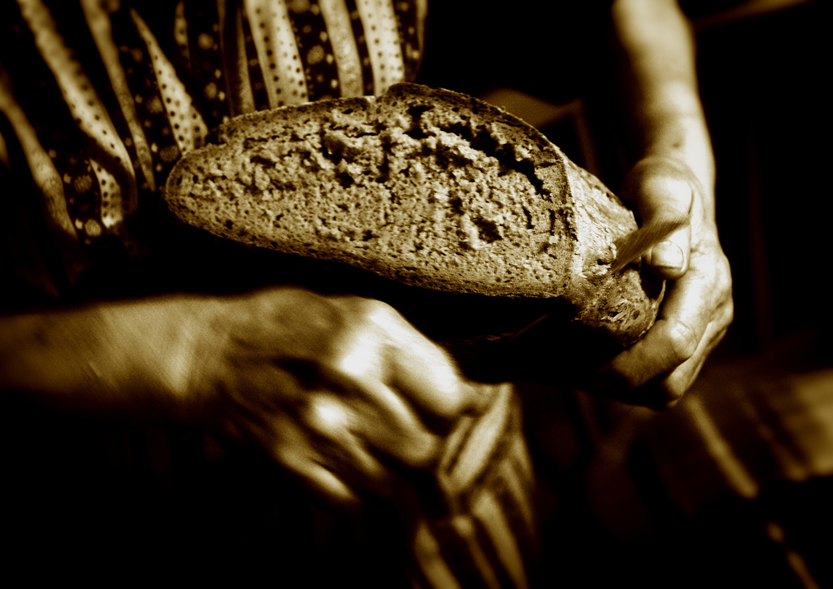
Bread of Life
- from Art in the Christian Tradition
Dear friends,
In John 6:24-35, Jesus begins "The Bread of Life Discourse", which continues to the end of Chapter 6 in the Gospel according to John. In the same vein, in one of the foundational scriptures of Mahayana Buddhism we find:
To clear away the pain of thirst and hunger,
And during the aeon of famine,
May I myself change into food and drink."
- Shantideva, Bodhisattvacharyavatara, III(9)
Both teachers speak to the condition of hunger and the need for sustenance. But not just physical hunger and sustenance, but also spiritual, which often leads to a far deeper pang of starvation and thirst.
Jesus begins by addressing the physical need of the crowd following him, for they are hungry and are in pursuit of bread. Yet, He urges them not to work for the food that perishes, but for the food that endures for eternal life. Here, Jesus is urging us to look beyond our basic, temporal needs and instead invest our efforts in seeking spiritual wisdom – a nourishment that satisfies eternally.
This teaching mirrors Shantideva's prayer where he aspires for food and drink to rain down to clear the pain of hunger and thirst. But Shantideva goes further by expressing the aspiration to transform himself into food and drink during times of famine. He is talking about more than physical sustenance, he is talking about compassion, generosity, and the Bodhisattva's commitment to relieve the suffering of others – to become spiritual nourishment for a world in spiritual famine.
When Jesus states "I am the bread of life. Whoever comes to me will never be hungry, and whoever believes in me will never be thirsty," he does not claim to be a mere provider of physical sustenance. He positions himself as the source of spiritual nourishment – a path to truth, to a higher reality that transcends the transient physical world. This metaphor is not so far removed from Shantideva's aspiration to change into food and drink himself – both allude to becoming a form of spiritual nourishment for the world.
In our own lives, we might find ourselves hungering and thirsting – not for physical bread and water – but for purpose, for wisdom, for compassion, for love. And these shared teachings encourage us not only to seek these higher forms of nourishment but also to become them. To feed the world not just with our resources but with our wisdom, our compassion, and our love – this is the true 'bread of life'.
In their teachings, both Jesus and Shantideva urge us to shift our focus from physical needs to our spiritual needs and to the spiritual needs of others. As we live in a world filled with various forms of hunger and thirst, may we strive to become spiritual nourishment for those around us – a living embodiment of compassion, wisdom, and love.
Let us remind ourselves every day that each of us has the potential to become the bread of life, to become a source of spiritual sustenance for others. That in each act of kindness, each moment of understanding, each offer of comfort, we can clear away the pain of spiritual hunger and thirst.
Just as the body requires nourishment, so too does the soul. Let us be the ones to offer it. And in doing so, we find that we too are nourished.